Three philosophers come before the Indian king and seek to answer the question of whether fate is predetermined by fortuna (fate) or alterable through sapientia (free will). The first wise man compares the rational mind to a game of chess. The second brings dice to support his fatalistic point of view. The third one chooses trick-track (a variety of backgammon) to exemplify a ‘middle way’. This scene is illustrated at the beginning of the manuscript, depicting the three philosophers like the Magi. They hold their board games up like posters, showing their metaphorical, simplistic attributes to an uninformed reader. The third one is the tallest, begging the question whether this visual hierarchy was a conscious choice of the painter.
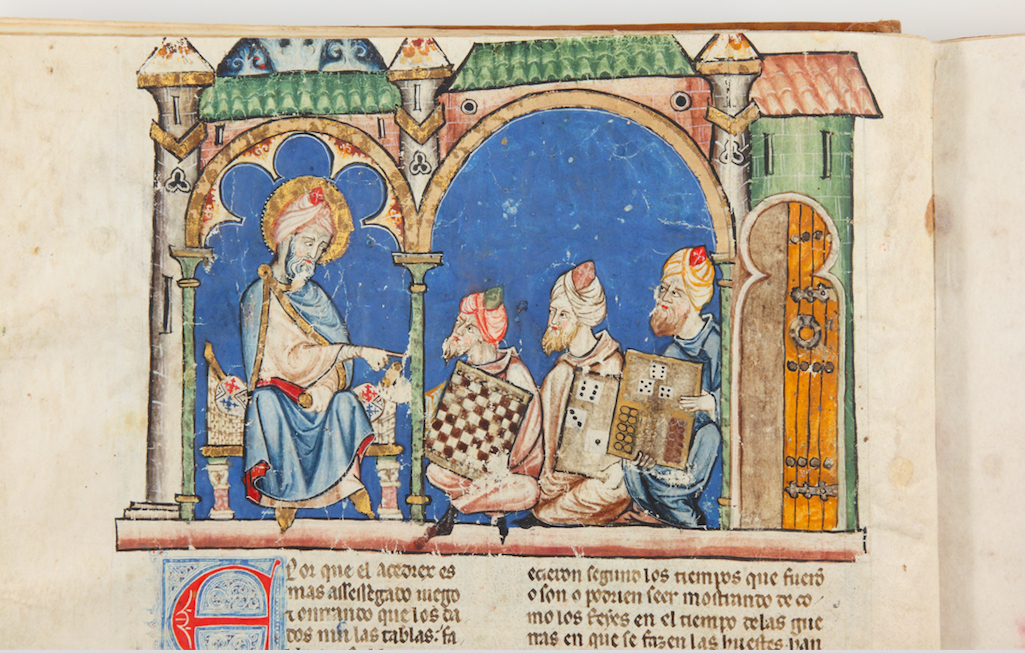
This anecdote is part of the ‘Book of Games’, created for King Alfonso X of Castile, Galicia and León in 1283, with its 150 illustrations arguably one of the most extensively illustrated books on medieval board and dice games. Reflecting the cultural transfer between the Arabic-Islamic world and Christian Europe in the Middle Ages, it serves a didactic purpose of teaching the rules of particular games and its variants, namely chess, dice, trick-track, Nin Men Morris, and astrological games. Its dialectic structure of thesis, antithesis and synthesis is complemented by the full- and half-page illustrations, mostly depicting the players during the game and conveying a sense of immediacy.
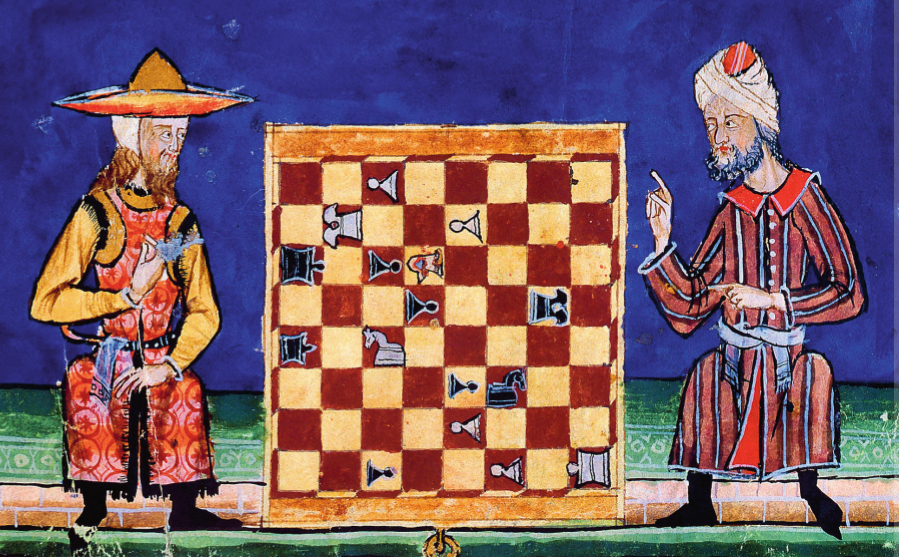
How are the physically very three-dimensional components of these games visualised? Two different perspectives are employed: while the players and the architectural background are viewed in three-quarter profile, the game board between them is tilted up in order to show the position of the game pieces on the board. This suggests a view from above as well as a frontal perspective – as if the pieces would fall off the board any minute, but also to put the reader in the position of the player, having the full overview of the game board.
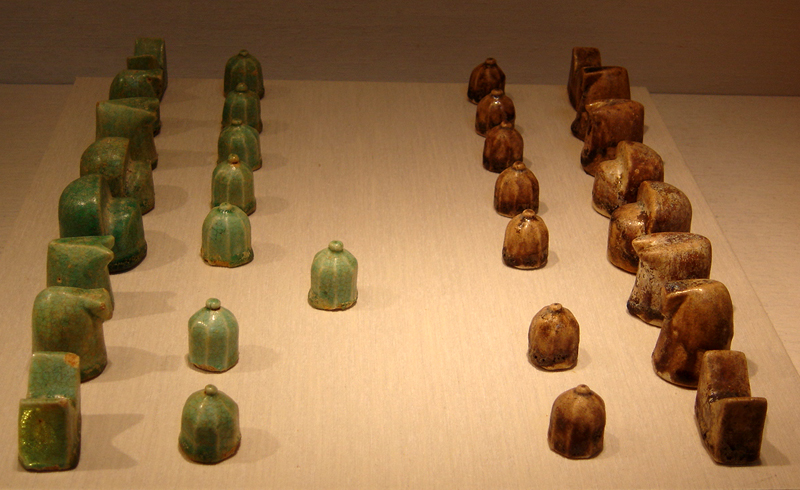
Directness is not only conveyed by the gestures of the figures but also by the way the game pieces themselves are displayed in quasi-frontal view for one player while being upside down from the perspective of the opponent. This ‘simplification’ has a didactic purpose, its importance remarked on by Alfonso in the introduction of the book: in order to understand the game, the viewers have to actually see it (‘non tan solamientre por entendimiento mas aun por vista’). The king also emphasises the necessity of using different colours of the game pieces to elucidate the complex descriptions of the games. Interestingly, these descriptions and the illustrations themselves are not shown on the same page, which is probably due to the overall structure of the text, necessitating an optical separation of the task itself from its solution.
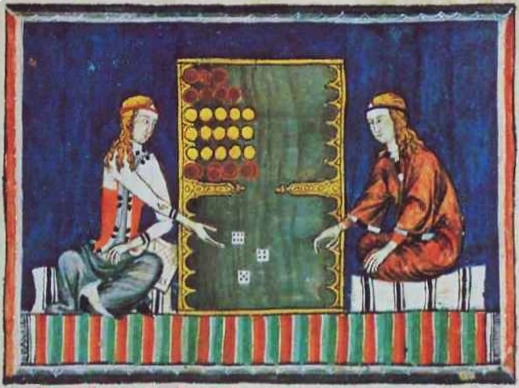
Board and dice games were an integral part of virtuous courtly life. However, they were not only reserved for royalty and aristocracy but also for the leisure of people of all ages, all religions and all professions, rich or poor. The display of the rich cultural and social background was a strategy of the patron to unite all his subjects under the pretext of playing games. This is revealed by the final astrological games, the conceptual peak of the book. The king himself is involved as a player here, stressing the importance of this particular game.
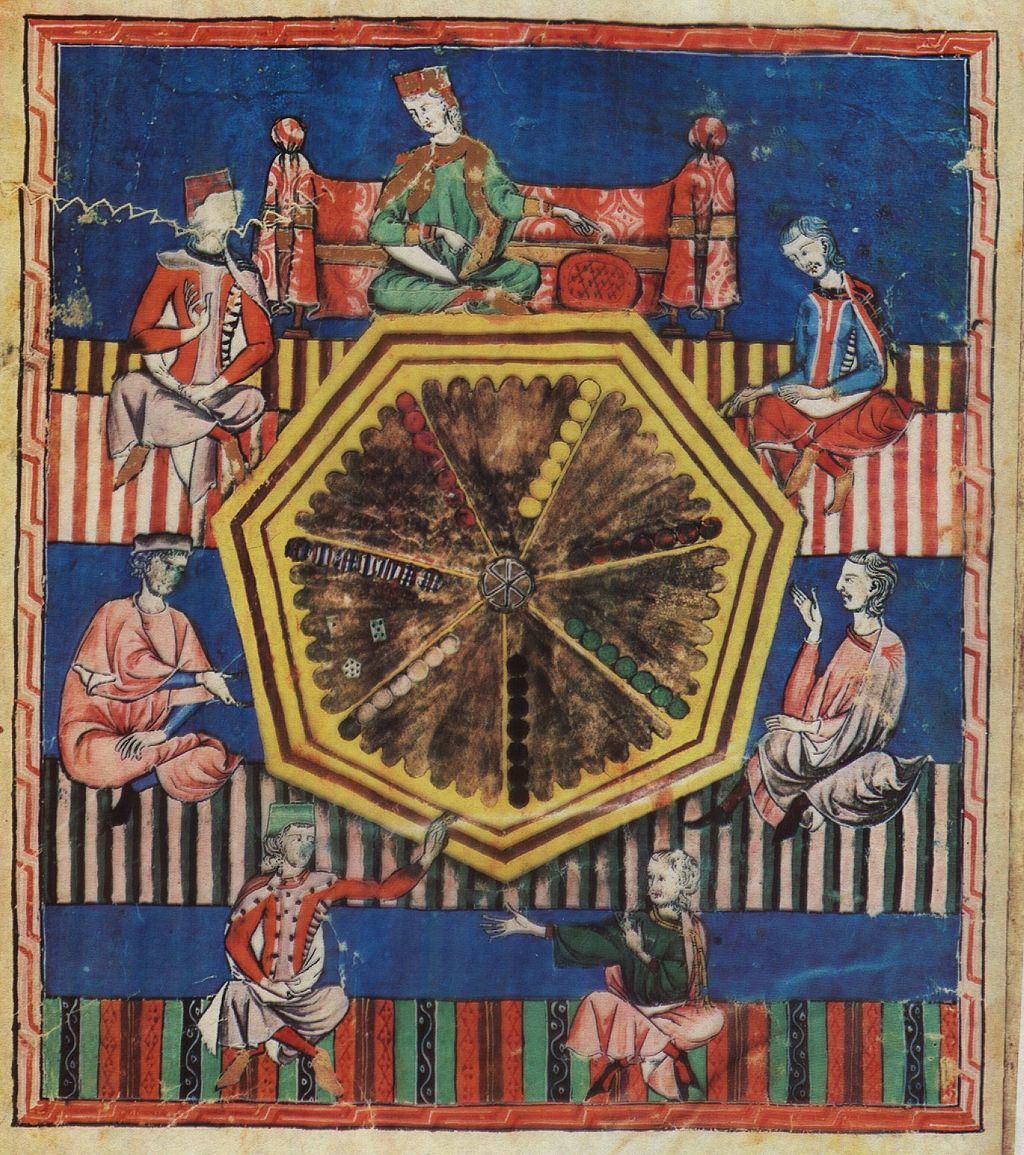
How does this central heptagon express the underlying purpose of the book? As pointed out, the whole narration is dialectic, centred around the philosophical debate of free will against determinism. Rationality/chess as a thesis is opposed by fatality/dice as the antithesis, and prudence/trick-track as empirical pragmatism is their synthesis. The astrological component at the end lifts this discussion to a completely new level: the game of astrological tables, is the final answer to this problem, combining chess and dice with astrology. The latter, being the highest form of natural philosophy at that time, represented a core element of Alfonso’s intellectual programme to highlight his religious authority:
‘[…] mas autun ssegunt natura de los çielos e de las otras cosas spirituals, queremos prouar que la nuestra ssanta Ffe es ley derecha e çrencia verdadera […]’
This goes beyond the dialectic of the three philosophers, elevating Alfonso as the ultimate sage, who linked these games to the perfection of God’s creation and Christianity as the one true religion. Thus, the deliberately simplistic, colourful, two-dimensional depictions representing their three-dimensional equivalents aid in achieving an intellectual as well as political and religious purpose at the court of king Alfonso.
Further reading
Ricardo Calvo, ‘El libro de los juegos de Alfonso X el Sabio‘. In Libros del ajedrex, dados y tablas, edited by Vicent García Editores, Valencia, and Ediciones Poniente. Madrid: Patrimonio Nacional, 1987, 125–386.
Dwayne E. Carpenter, ‘Fickle Fortune: Gambling in Medieval Spain‘. Studies in Philology 85/3 (1988): 267–78.
Ulrich Schädler. Das Buch der Spiele. Vienna: Lit, 2009.
